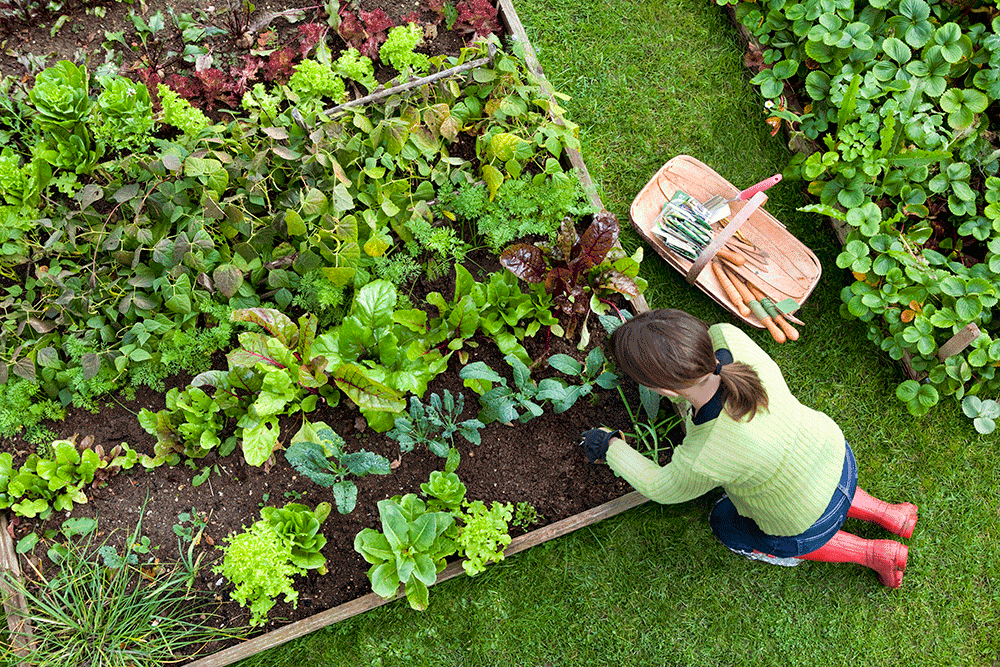It’s not quite time to plant your garden vegetables yet. Because our weather is so uncertain (four years ago, we had a frost AFTER May 1st), I always wait until May 1st to plant tender veggies (like tomatoes, peppers, cukes, beans, etc.). Even then, I double-check the long-range weather forecast just to be safe.
Prepare Your Vegetable Garden Bed and Plants
I want to get my hands dirty, though. So, the first thing I do is to check my garden bed and remove any weeds. I still have time to amend the soil with fresh compost and turn it in. If you have started your seedlings for tomatoes, peppers, eggplants, etc., as I have, now is an excellent time to think about hardening them off—getting them used to outdoor conditions without damage. Remember, shorter-season veggies like cucumbers, melons, pumpkins, beans, and squash should be directly sowed in a few weeks—therefore, no transplant shock.
Orient Your Veggies to the Outside World
I transplanted my tomato, pepper, and other seedlings I started indoors in February/March from their seed-starting trays to little pots a few weeks ago. I like peat pots because when it’s time to go into the ground, I can plant the pot and all.
When the outside air temperature is 60 degrees and over, I set the peat pots in trays (I used those aluminum cake pans) outside in bright shade or dappled sun (we want to avoid sunburn). I pull them in before dark. After a week, I move them to a spot with more sun. This would be like us working on our base tan so we don’t sunburn.
Important – Read Planting Instructions!
Now, a few things to remember when you direct plant—whether seeds or seedlings. When you have limited space in your garden, it can be tempting to cram as much in as possible. But the seed packets and plants have planting directions that tell you how far apart to plant; FOLLOW THOSE DIRECTIONS! When plants are spaced too closely, diseases and insects can run freely from plant to plant.
What to Do After You Plant Those Veggies
After planting seedlings, wait a week or two to fertilize them to let them spread their roots first. When you water, try to avoid sprinklers. Sprinklers get the whole plant wet, and with our summer humidity, we don’t want to make it easier for fungus to thrive. Use a hose and put the water at the roots where you need it. Start checking the plants several times a week. If problems like diseases and insects are caught early, they are much easier to deal with.
Prevent Deer and Squirrels From Raiding Your Vegetable Garden
Here are some tips: If you have had problems with deer nibbling in your garden, incorporate some herbs. Deer do not like that herby smell. I have two raised beds, and herbs are planted outside each. Onions and garlic can also be used.
Keep a birdbath a short distance away. Squirrels often go after your tomatoes, but what they’re doing is going after the moisture content. Provide it; they might leave your tomatoes alone, especially if you spray them with hot pepper.
These simple steps will help ensure a bountiful harvest of delicious veggies. Oh, and one more thing—the most important thing—enjoy!

